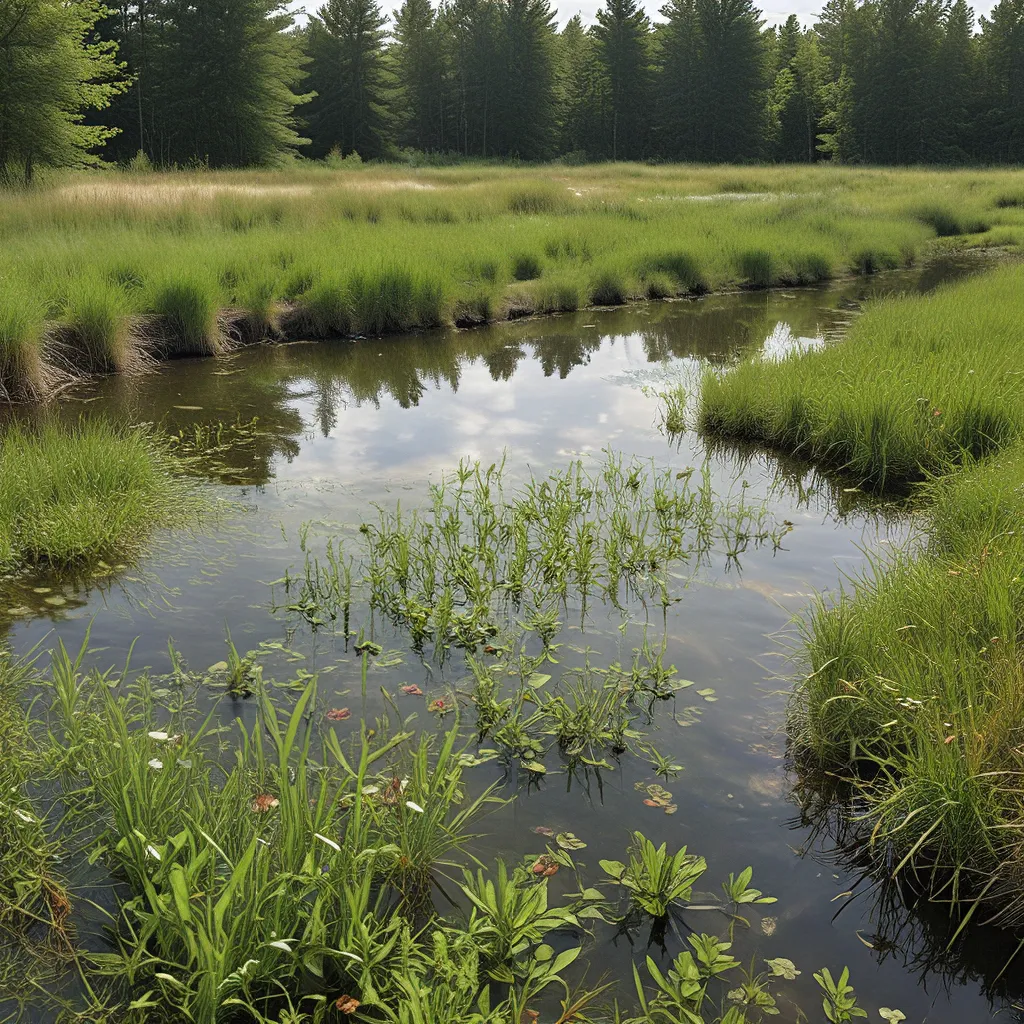
As an environmental enthusiast, I’ve always been fascinated by the ingenious ways nature can help solve our most pressing challenges. And when it comes to wastewater treatment, the integration of nature-based solutions has emerged as a truly inspiring approach.
Imagine a world where our water infrastructure not only purifies and recycles precious resources, but also creates vibrant habitats, restores ecosystems, and enhances the overall well-being of our communities. That’s precisely the vision that’s taking shape in the realm of wastewater treatment.
The Rise of Nature-Based Solutions
Traditional wastewater treatment often relied on extensive piping systems, energy-intensive treatment plants, and chemical-laden processes. While effective, these conventional methods can come with significant drawbacks – high costs, environmental impacts, and a disconnect from the natural world.
But a shift is underway, and it’s all about harnessing the power of nature. Nature-based solutions, as they’re known, are strategic approaches that leverage natural features and processes to address both human and ecological challenges. And in the world of wastewater, these innovative solutions are truly transforming the game.
Constructed Wetlands: Nature’s Water Purifiers
One of the most exciting nature-based solutions for wastewater treatment is the use of constructed wetlands. These engineered ecosystems are designed to mimic the natural filtration and purification processes found in wetlands, marshes, and other aquatic environments.
Imagine a lush, verdant landscape where water flows gently through a intricate network of plants, soil, and microorganisms. As the water travels through the wetland, a remarkable series of physical, chemical, and biological processes take place. Nutrients, organic contaminants, and even heavy metals are effectively removed, leaving the water cleaner and safer for a variety of reuse applications.
According to the EPA, these constructed wetlands can be a game-changer for water reuse projects, providing multiple benefits beyond just water purification. They can help lower the cost of water reuse, gain community support for water infrastructure investments, and even enhance climate resilience through flood protection and sea level rise adaptation.
The Fairfield-Suisun Sewer District: A Nature-Based Success Story
One inspiring example of the power of constructed wetlands can be found in the Fairfield-Suisun Sewer District in central Solano County, California. This forward-thinking utility has embraced the integration of nature-based solutions into their wastewater management strategy.
According to the EPA, the Fairfield-Suisun Sewer District is implementing a project called the “Community Treatment Wetland and Climate Resiliency Project.” This innovative initiative will create a nature-based solution using treated wastewater to establish wetland habitats on a horizontal levee.
By leveraging the power of constructed wetlands, the district aims to not only improve water quality, but also enhance flood protection, habitat restoration, and recreational opportunities for the local community. It’s a shining example of how wastewater treatment can be transformed from a necessary chore into a vibrant, nature-infused endeavor that benefits both people and the environment.
Reverse Osmosis Concentrate: A Wetland-Based Solution
While the benefits of constructed wetlands for wastewater treatment are well-documented, researchers are also exploring their potential in addressing another pressing challenge: the management of reverse osmosis concentrate.
Reverse osmosis is a highly effective water purification technology, but it also generates a concentrated waste stream that can be difficult and costly to treat and dispose of, especially in inland locations. According to the EPA, researchers are now evaluating the use of constructed wetlands, specifically horizontal levees, as a potential low-cost solution for removing contaminants from reverse osmosis concentrate prior to disposal.
By harnessing the natural filtration and remediation processes of wetland ecosystems, this innovative approach could help water utilities reduce the cost and environmental impact of managing this challenging waste stream. It’s an exciting area of research that holds promise for a more sustainable future in wastewater treatment.
Embracing the Future of Wastewater Treatment
As I delve deeper into the world of wastewater treatment and nature-based solutions, I can’t help but feel a sense of optimism and wonder. The integration of these two seemingly disparate realms is yielding remarkable results – cleaner water, healthier ecosystems, and more resilient communities.
And it’s not just happening in academic labs or pilot projects – real-world utilities like the Fairfield-Suisun Sewer District are leading the charge, proving that this approach is both practical and transformative.
I’m particularly fascinated by the concept of reverse osmosis concentrate treatment using constructed wetlands. It’s a prime example of how researchers are continuously pushing the boundaries of what’s possible, exploring innovative solutions to complex challenges.
Of course, as with any emerging field, there’s still much to be discovered and refined. Ongoing research will likely shed light on the optimal design, performance, and maintenance of these nature-based wastewater treatment systems. And as climate change continues to shape our environmental landscape, the role of constructed wetlands in providing climate resilience will surely be an area of growing interest.
But one thing is clear: the future of wastewater treatment is inextricably linked to the embrace of nature-based solutions. By harnessing the power of natural systems, we have the opportunity to create a more sustainable, harmonious, and regenerative approach to managing our most precious resource – water.
So, the next time you flush the toilet or turn on the tap, I encourage you to consider the remarkable journey your wastewater might be taking, and the incredible ways nature is being integrated to purify, renew, and enhance our shared environment. It’s a testament to the ingenuity of the human spirit, and a glimpse into a future where wastewater is no longer a burden, but a catalyst for growth, restoration, and connection.